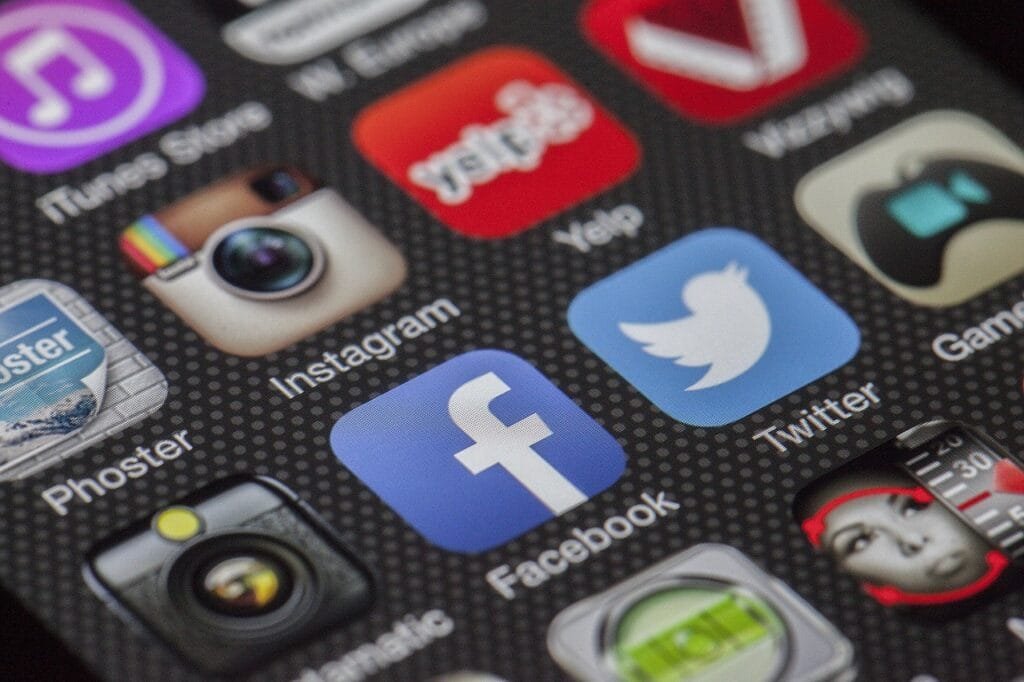Branded content marketing is a form of inbound marketing that uses paid, owned and earned media to distribute a brand’s core message. It’s a highly strategic form of marketing and one of the most effective ways to reach a target audience, build trust and drive engagement with your brand.
Branded content marketing has become an increasingly popular strategy for companies looking to engage with their target audience, create brand awareness, and ultimately drive sales.
It is a form of content marketing that produces high quality, relevant and interesting content, with the purpose of promoting a brand or product. By creating content that is informative, entertaining, or inspiring, brands can forge stronger connections with their audience, building trust and loyalty.
What does branded content look like?
Branded content can take many forms:
Blog posts, videos, infographics, podcasts and more — whatever medium makes sense for your business vision and business goals. The goal is to create engaging, compelling stories that resonate with your target customers and help them solve problems they care about.
You have to ensure that your content is relevant and interesting to your target audience. If you can do this, then the process of driving engagement with your brand, building trust and increasing sales becomes all the more easier.

As a Creative Director in the high-end fashion industry, I’ve been closely engaged in several branded content marketing initiatives for Amarra. Such strategies have proven to be highly impactful.
It’s a two-fold strategy; first, it helps in establishing a strong brand identity, and secondly, it engages the customers by narrating a story, making them part of our journey.
One notable campaign we executed was the ‘Queen for a Night’ prom series. We highlighted real stories of young women wearing our designs, using their narrative as the foundation to connect on a deep, emotional level with our customers.
The content resonated strongly, leading to a significant increase in brand recognition and sales. Despite the effectiveness, it’s crucial for this strategy to constantly evolve. In a highly visual industry like fashion, incorporating innovative multimedia like VR, 360-degree videos, or interactive lookbooks can amplify the shopper’s experience.
Moreover, investing in AI-driven insights can help serve personalized content, making the brand more relatable to a vast, diverse consumer base. Combined with transparency and authenticity, these tactics can truly propel branded content marketing to the next level.
Abhi Madan, Co-Founder & Creative Director of Amarra
Why branded content marketing works?
Branded content marketing works because it offers a unique opportunity for brands to become part of consumers’ lives as well as communicate their value proposition in an engaging way. It also gives them an opportunity to connect with new audiences they may not have had access to otherwise.
Branded content is a type of marketing that involves creating content that is in line with the brand’s values. It’s not just regular content creation or advertisement, but rather a story or an experience that helps you connect with your audience on an emotional level. It works because it helps you establish yourself as an authority in your niche and build trust with your audience.
Branded content marketing works because it’s authentic, not forced. When you have a true connection with your audience and their interests, they’ll trust you more and feel like they’re getting something valuable from your brand. If you’re creating content for the sake of just building links or driving traffic back to your site, people will be able to tell — and it won’t work nearly as well as it could if you were genuinely interested in providing value for them first.

Branded content marketing is an increasingly popular strategy because it aligns the informational or entertainment value with brand-specific messaging. Unlike traditional advertising, which can be overt and disruptive, branded content is designed to build meaningful connections with the audience by providing content that they find genuinely interesting or useful.
Advantages:
1. Engagement: Well-executed branded content has the potential to significantly increase engagement with the target audience.
2. Brand Loyalty: By providing value beyond the product or service, it fosters a deeper relationship with customers, enhancing brand loyalty.
3. Reach: When content resonates with the audience, it is more likely to be shared, increasing reach organically.
Areas for Improvement:
1. Authenticity: Consumers are increasingly savvy and can easily spot content that feels too promotional or inauthentic. Ensuring content is genuine and aligns with the brand’s values is key.
2. Integration: While branded content is effective, its integration with other marketing channels can be enhanced to provide a seamless consumer journey.
3. Measurement: Establishing clear metrics for success and regularly analyzing these metrics can help in understanding the impact and optimizing strategies.
Branded content marketing is a powerful tool when executed with authenticity and a clear focus on providing value. If you are considering integrating this strategy into your marketing plan and need more specific advice or examples, please feel free to reach out.
Bonnie Ruan, Chief Product Officer of Beska Mold
Related Reads:
- The Ultimate Guide on Link Building
- Guest Posting at Scale: The Definitive Guide
- How to use HARO for Building Links and Branding
Why it’s a good idea to create a persona for your brand?
One of the most important parts of content marketing is having a persona. A persona is any profile that represents your ideal customer. It’s important to have one because it helps you create content that will speak to those people.
Let’s say you’re selling a product that helps entrepreneurs start their own business. You want to talk to people who are interested in starting their own business, so you create a persona for that group of people. You can then create content that is specifically geared towards this persona. You can write blog posts about how to start a business and what mistakes you should avoid when starting one. By focusing your content on one specific group, you’re able to connect with them more easily.
To create an ideal customer persona, you should start with an in-depth market research campaign. You can use some of our suggested market research tools and business intelligence tools to make the process faster, easier and more effective, as well.

I believe that branded content marketing is great, but is something that is easy to get wrong.
There are many businesses that are too eager to center they content marketing strategies solely on their own business, which can alienate the audience and make them feel as though they are being sold something. On the other hand, there are those which try to make content that happens to include branded content, but this can feel very forced. Many brands are trying to push their products whilst following TikTok trends, and this appeals to no one.
I think that one of the best ways to do this is to first identify your target audience and make content that is interesting and sincere. Try to speak about the topic of what your business does without only speaking about your business specifically. Try to start a conversation about the state of your industry. If you try to interest people, it will endear them to you, encouraging them to support your business and use your services.
Mathias Ahlgren, CEO and Founder of Website Rating
How to humanize your brand for better content marketing?
The best way to humanize your brand is to be yourself. One of the biggest mistakes brands make is trying to be something they’re not. You don’t have to be a comedian or an expert in everything, but if you are genuine and authentic, people will appreciate that.
People want to connect with other people, so when you share something from your life, it’s more relatable than a generic picture of your product or service.
Here are three ways you can humanize your brand for better content marketing:
- Share real-life stories that show how people use your product or service;
- Use video to show how people use your product or service;
- Tell the story behind the product;
- Tap into influencer marketing campaigns.
Why humanizing your brand matters?
Brands often have a reputation for being cold, impersonal and distant — but it doesn’t have to be that way. You can use your brand voice to connect with your audience and build trust with them over time by showing that you too are a person who shares similar interests and values.
There’s also research showing that when people perceive a company as humanized — as having emotions, feelings or intentions — they tend to trust them more than those who don’t come across as so humanized (source). In fact, it was found that when brands displayed empathy in an advertisement, there was an increase in purchase intentions from consumers by 21%.
Do not use your digital marketing campaigns just to get more leads, build a list or sell more stuff, but also for humanizing your brand. If you employ a digital marketing agency or SEO agency, ensure your marketing efforts actually take this into account. All your marketing

In my opinion, the key to enhancing the effectiveness of branded content marketing lies in being authentic.
Our platform’s emphasis on business intelligence courses indicates that our audience values insights backed by data and practical tips. By producing content that genuinely tackles their challenges and goals, we’ve attracted and retained learners.
An impactful campaign that exemplifies this strategy involved teaming up with experts in the BI field to develop case studies, leading to a 40% rise in course completion rates.
To keep progressing, staying attuned to changing learner expectations and incorporating technologies for a more personalized learning journey is crucial.
Arkadiy Ostrenko, CMO of Bi Box
How To Identify A Successful Branded Content Marketing Campaign?
The main goal of branded content marketing is to increase engagement with your audience. You want them to learn about your brand, but you also want them to trust you and become loyal customers or followers. You want this so that when they need something from your company such as a product or service, they will choose yours over others, based on their previous experience with you.
You can identify a successful branded content marketing campaign by looking for the following characteristics:
#1. Audience-centric
Successful branded content marketing puts the target audience at the center of its strategy. By understanding the needs, interests, and preferences of the audience, marketers can create content that resonates with them and fosters a strong connection to the brand.
#2. Authenticity
Today’s consumers are savvy and can easily recognize when content is inauthentic or overly promotional. Successful branded content marketing focuses on being genuine, transparent, and honest, allowing consumers to trust and connect with the brand more readily.
#3. High-quality content
Successful branded content marketing prioritizes creating content that is informative, engaging, and valuable to the audience. High-quality content reflects positively on the brand and encourages consumers to share and interact with it, boosting its reach and effectiveness.
#4. Storytelling
Telling compelling stories is a powerful way to connect with audiences on an emotional level. Successful branded content marketing often leverages the power of storytelling to engage viewers, create memorable experiences, and foster brand loyalty.
#5. Consistency
To create a strong brand identity, successful branded content marketing campaigns maintain a consistent tone, voice, and messaging across all content. This consistency reinforces the brand’s values and helps to create a recognizable and memorable brand presence.
#6. Shareable and engaging
One of the main goals of branded content marketing is to encourage consumers to share and engage with the content. Successful campaigns often feature shareable elements, such as intriguing headlines, visually appealing graphics, or interactive components, to increase the likelihood of the content being shared and discussed.
#7. Measurable results
Successful branded content marketing campaigns are designed with clear objectives and measurable outcomes in mind. This enables marketers to track the success of their campaigns and make data-driven decisions about future marketing efforts.
#8. Integration with other marketing channels
Branded content marketing works best when integrated with other marketing channels and strategies, such as social media, email marketing, and search engine optimization. This integration ensures a cohesive and consistent brand presence across all platforms, maximizing the impact of the content.
#9. Adaptability
Successful branded content marketing campaigns are adaptable to changes in consumer preferences, market trends, and new technologies. Marketers should be prepared to iterate and evolve their content strategies to stay relevant and engaging in the ever-changing digital landscape.
#10. Long-term commitment
Branded content marketing is not a one-time effort; it requires a long-term commitment to consistently create, publish, and promote high-quality content. Successful campaigns are built on a foundation of sustained effort, ongoing analysis, and continuous improvement.

One of the most effective branded content campaigns I’ve been a part of was a collaboration with a luxury fashion brand. Rather than just showcasing their products in a traditional ad, we worked together to create a series of videos that told the stories of the artisans behind the brand – the seamstresses, the leatherworkers, the designers who poured their heart and soul into every piece.
The result? An outpouring of engagement and emotion from the audience. They weren’t just seeing a product – they were connecting with the human stories behind it. They were invested, they were moved, and most importantly, they were more likely to remember and engage with the brand in the future.
Forging Emotional Connections
That’s the beauty of branded content – it has the power to forge an emotional connection between a brand and its audience. In a world where consumers are bombarded with thousands of advertising messages every day, branded content stands out by offering something of value – whether it’s entertainment, education, or inspiration.
Think about it – when was the last time you shared a traditional ad with a friend? Now, when was the last time you shared a piece of branded content that made you laugh, made you think, or made you feel something? Chances are, the latter happens far more often.
The Future of Branded Content
So, how can branded content marketing be improved upon? The key is to keep pushing the boundaries of creativity and authenticity. It’s not about creating content that feels like an ad – it’s about creating content that feels like a gift, a valuable addition to your audience’s lives.
One way to do this is by embracing emerging technologies and platforms. From interactive videos to immersive AR experiences, the possibilities for branded content are endless. But no matter the format, the core principles remain the same – tell a compelling story, offer value to your audience, and stay true to your brand’s voice and values.
The Power of Partnership
Another way to elevate your branded content game? Collaborate with influencers and thought leaders in your industry. When we partnered with a renowned mixologist to create a series of cocktail tutorials featuring our clients’ products, the results were electric – not only did we reach a whole new audience, but we also gained valuable insights and credibility from an industry expert.
Measuring Success
Of course, the ultimate goal of any branded content campaign is to drive real results for your business. And while metrics like views and shares are important, they don’t tell the whole story. The true measure of success is the impact your content has on your audience – did it change their perception of your brand? Did it inspire them to take action? Did it foster a sense of loyalty and advocacy?
The Road Ahead
As I look to the future of branded content marketing, I’m excited by the possibilities. I see a world where brands are not just advertisers, but storytellers, thought leaders, and changemakers. Where branded content is not just a tactic, but a philosophy, a way of building meaningful relationships with our audiences.
Daniel Meursing, CEO of Premier Staff
Selling and Branded Content Marketing – Managing the Two
Let’s face it, branding content marketing can be a tough sell. After all, you’re asking your audience to listen to your message in exchange for something like a discount or lead generation.
But if you’re not careful with your approach, you might be tempted to oversell for the sake of branding content. And that’s not good for anyone involved.
Here are three things you should never do when Selling for Branded Content:
1. Don’t overpromise
When creating content, you want to make sure that it’s valuable and relevant to your audience. It’s also important not to overpromise in your content. If you promise to teach your readers something that they won’t find useful, they’ll feel misled and will likely leave negative reviews.
2. Don’t use clickbait
Just like with any other marketing strategy, you want to avoid using clickbait tactics when conducting email outreach or promoting branded content.
3. Don’t be boring
Branding content strategy isn’t just another opportunity for your company to sell its products and services; it’s an opportunity for you to share ideas and build relationships with your customers by creating engaging, meaningful content that they’ll enjoy reading.
How to Create a Branding Content Marketing Strategy?
Content marketing is one of the best ways to build your brand and reputation. It gives you an opportunity to connect with your audience in a meaningful way, build trust and establish yourself as an expert. But if you’re not careful, you could easily end up wasting time and money on content marketing that doesn’t work.
To ensure that your content marketing strategy delivers value to your business, follow these five steps:
#1. Create a Content Calendar to help you with your Branded Content Strategy.
If you’re like most businesses, you’ve got a lot going on. From product launches to customer service inquiries, it’s easy for your branding content strategy to get lost in the shuffle.
A content calendar is a great way to stay organized and ensure that the right message is getting out at the right time.
A content calendar helps you plan and organize all of your branded content. It can be used to:
- Plan ahead: Use your calendar as a brainstorming tool by listing topics that you want to cover in the upcoming months. This will help you identify gaps in your content and what topics might be most relevant or interesting to your audience.
- Prioritize: Create a list of stories that need immediate attention, such as product launches or major events like earnings reports. You can also use this list as a roadmap for future projects and ideas. Ensure your posts follow the marketing 3Ps and do not ever suffer from marketing myopia.
- Schedule posts: Create an editorial calendar with all scheduled posts along with their due dates, tags and other details so that they’re easy to find when it comes time to publish them.
#2. Branded Content Marketing is a type of Promotion that tells a Story.
Branded content marketing can be a powerful way to engage your audience and build relationships with them. It’s one of the best ways to tell a story, build trust and get people talking.
But how do you actually do it? Here are some tips for creating effective pursuing branding content:
- Create a compelling narrative. Your story should be clear, concise and easy to understand. You want people to know what they’re getting into when they click on your piece of branded content.
- Show, don’t tell. This means not just telling them what the product does — show them! Visuals help readers understand concepts faster than text alone and make the piece more engaging.
- Keep it authentic. Don’t try too hard to fit into the mold of traditional media outlets; instead, just be yourself! Your brand’s voice can be defined by its tone as well as its subject matter; don’t try too hard to fit into someone else’s voice or style if it doesn’t feel right for you or your company culture.
#3. The Promotion is tied to your Brand
Expressing your content in a way that entertains its consumers with an emotional story or fun video instead of hard selling them, can help to effectively communicate with the audience in order to grow the business.
It’s no longer enough to simply show us your product, explain how wonderful it is and then move on. Consumers today have been trained to ignore traditional advertising, so marketers have to think outside the box and find ways to engage us on an emotional level.
Here are a few tips for creating brand-focused content that consumers will actually want to watch:
- Be entertaining. The best way to get people’s attention is to entertain them first and foremost — whether through humor or emotion or both. You can still sell your product in a fun way, but don’t force it down our throats!
- Create a story line that makes sense within the context of your brand image or personality — something that reflects how you want customers to perceive you as an organization or person. It has to make sense with how people view you already; otherwise they’ll think you’re trying too hard and it won’t be believable anymore!
- Use video (or photos) instead of just text because people are more likely to watch something than read it! If possible, try using video that includes real people in real situations rather than actors who recite scripts written for them.
But most of all, ensure that the message is somehow connected with the brand. We have five case studies down below to help explain how others did it.
#4. Branded Content Marketing should be appealing and personal.
It’s important to keep your brand in the forefront, but it should not look out of place. If you want to create branded content that is appealing and personal, then the following tips might help:
- Your content needs to be relevant to the audience you are targeting.
- You need to have a clear call-to-action in your content.
- Your content must be entertaining or informative enough so as to keep the reader’s attention
- Focus on creating valuable content that will help your readers solve their problems
#5. Pique your Audience’s Curiosity.
Piquing your audience’s curiosity is an essential part of successful branded content marketing. By creating intrigue and interest, you can capture the attention of your target audience and encourage them to engage with your content. Here are a few tips for piquing your audience’s curiosity for branded content marketing purposes:
- Use compelling headlines and images: The headline and featured image are the most important components of your content, so make sure that they grab the reader’s attention.Use a compelling headline that catches your audience’s attention and makes them want to learn more, and include a high-quality image that illustrates your content and draws people in.
- Offer exclusive access: People are naturally curious, and offering them exclusive access to behind-the-scenes information or special offers can be a great way to pique their curiosity. For example, you could provide sneak peeks of upcoming products, offer limited-time discounts, or give your audience access to exclusive content or events.
- Incorporate a sense of mystery: Adding a sense of mystery to your content can be a powerful way to pique your audience’s curiosity. You can do this by creating puzzles, challenges, or quizzes that require your audience to engage with your content to uncover the answer. You can also hint at upcoming news or events without revealing too much, leaving your audience wanting to learn more.
- Use social media teasers and sneak peeks: Social media is a great platform for building anticipation and piquing your audience’s curiosity. Use social media to tease upcoming content or events, or to share sneak peeks of what’s to come. This can help build excitement and encourage your audience to engage with your content and follow your brand. Most small businesses use Instagram Reels to do this.
- Create questions that they want answers to: Whether it’s through a blog post or video, ask questions that will get people talking about your content — and sharing it with their friends. This can help build trust between you and your audience by making them feel like they’re part of something bigger than themselves.
- Showcase people who are doing things differently: People love reading about other people’s experiences, especially when those experiences involve travel or adventure! If you can showcase others who are following their dreams or doing something unique in their lives, then show that there’s no limit to where life can take us if we dare to dream. A great way to do this is by conducting Instagram giveaways.
- Create a community: Travel bloggers can create their own communities through social media, which makes it easier for people to connect with each other and share their experiences. Twitter can increase communication between your brand and your potential customers, thus boosting engagement and two-way communication between each other.

Businesses may use branded content marketing as a potent tool to build meaningful connections with their audience and promote their brand.
Here are some ideas about it, building Credibility: Companies can gain the audience’s trust and confidence by using branded content. When executed well, it establishes the brand as a leader in its sector and encourages customer loyalty.
SEO Benefits: Search engine optimization (SEO) might benefit from branded content as well. Relevant, interesting, and high-quality material usually does well in search results, bringing in natural traffic to the brand’s website.
Authenticity is a prerequisite for successful branded content marketing. It’s more than just promoting goods or services—it’s also about crafting an engaging narrative that embodies the core principles of the brand.
Engagement: Compared to traditional advertising, branded content has the ability to pique audiences’ interest more deeply.
Through producing content that is meaningful, entertaining, or educational, brands may establish a relationship with their target audience and garner attention.
Nikhil Chitnis, SEO executive of TSL Consulting Pvt. Ltd
Branded Content Marketing Examples.
#1. Lego’s “The Lego Movie”
Lego’s “The Lego Movie” is a prime example of a successful branded content marketing campaign. Released in 2014, the animated film was an instant hit, grossing over $468 million worldwide and generating significant buzz for the Lego brand. The movie showcased various Lego sets and characters, effectively promoting the brand’s products without overt advertising.
Key Strategy: Lego leveraged the power of storytelling to engage and entertain its audience. By creating an entertaining, family-friendly movie centered around its products, Lego was able to build brand awareness and affinity, while driving sales of its toys.
Results: The success of “The Lego Movie” led to increased sales and several sequels and spin-offs, further solidifying the Lego brand’s position in the market.
#2. Dove’s “Real Beauty” Campaign
Dove’s “Real Beauty” campaign, launched in 2004, aimed to challenge societal beauty standards and promote body positivity. The campaign featured real women with diverse body types, ages, and ethnicities, showcasing their natural beauty and confidence.
Key Strategy: Dove tapped into a powerful cultural conversation about beauty, creating content that resonated with its target audience. By taking a stand on an important issue, Dove was able to create an emotional connection with its audience, fostering brand loyalty.
Results: The “Real Beauty” campaign generated significant media coverage and public discussion, establishing Dove as a leader in promoting body positivity. The campaign also led to increased sales and brand awareness, demonstrating the power of content marketing that resonates with consumers’ values.
#3. American Express’s “Open Forum”
American Express’s “Open Forum” is a content marketing platform aimed at small business owners. Launched in 2007, the platform offers expert advice, insights, and resources to help small businesses grow and succeed.
Key Strategy: American Express positioned itself as a thought leader by creating valuable, informative content for its target audience. The platform was designed to provide practical advice and resources, demonstrating the brand’s commitment to supporting small businesses.
Results: The “Open Forum” has become a go-to resource for small business owners, with millions of unique visitors each month. The platform has also helped to strengthen American Express’s brand reputation, as well as drive customer acquisition and retention.
#4. Red Bull’s “Stratos” Campaign
Red Bull’s “Stratos” campaign, launched in 2012, featured Austrian skydiver Felix Baumgartner attempting to break the world record for the highest skydive. The event was live-streamed on YouTube, attracting millions of viewers and generating significant buzz for the Red Bull brand.
Key Strategy: Red Bull utilized an attention-grabbing event to showcase its brand values of adventure, risk-taking, and pushing boundaries. By creating content that was thrilling and unique, Red Bull was able to captivate its audience and generate extensive media coverage.
Results: The “Stratos” campaign garnered over 52 million live-stream views and generated significant social media engagement, driving brand awareness and sales for Red Bull.
#5. Coca-Cola’s “Share a Coke” Campaign
Coca-Cola’s “Share a Coke” campaign, launched in 2011, featured personalized Coke bottles with popular names and phrases, encouraging consumers to share the product with friends and family. The campaign also included interactive elements, such as a website where consumers could create their own virtual personalized Coke bottles and share them on social media.
Key Strategy: Coca-Cola tapped into the power of personalization and social sharing to create a buzz around its product. By making the campaign interactive and sharable, Coca-Cola encouraged consumers to engage with the brand and share their experiences with others.
Results: The “Share a Coke” campaign led to a significant increase in sales, particularly among younger consumers, and generated widespread social media engagement. The campaign has since been expanded to over 80 countries and continues to be a popular marketing initiative for the brand.

Branded content marketing plays a key role in our overall marketing strategy. It allows us to engage with our customers on a more granular level while demonstrating the innovation and robustness that makes TP-Link stand out in the industry.
Branded content marketing (or branded content marketing) is one of the most effective ways to reach consumers in today’s digital world. Unlike traditional advertising, branded content marketing is more subtle and authentic.
When we create content that aligns with our audience’s values and interests, we can build trust and loyalty that transcends a transactional relationship.
One of our most memorable campaigns is our “Home Is Where The Wi-Fi Is” series, which focused on the importance of consistent Wi-Fi in daily life.
We teamed up with influencers and creators to share their personal stories and advice on connectivity, which resonated with our audience on an emotional level.
The campaign raised brand awareness and engagement levels, with consumers responding positively to the relatable, informative content.
In order to take branded content marketing to the next level, authenticity and relevance must be at the top of your to-do list. Consumers are smarter than ever, and they’ll be able to tell the difference between content that feels forced and content that’s genuine.
Stick to your brand values and create meaningful experiences for your audience, and you’ll continue to make an impact and build long-lasting relationships in the digital world. With data and analytics, you can better understand your audience’s preferences and tailor your content accordingly, maximizing your impact and return on investment.
Laviet Joaquin, Marketing Head of TP-Link
Wrapping it Up
Branded content marketing has several benefits and is a great way to drive brand awareness. The key is finding the right balance between storytelling, your brand, and what you’re trying to achieve with your content. If you have a clear vision of how you want your content to look, you can use branded content marketing to achieve this.
Need any more help for your marketing? Send us an email at adhip[at]winsavvy.com or book an appointment for free here!
Read Next:
- 12 Tips To Uncovering a Great Digital Marketing Agent or Agency
- 7 Functions of Marketing
- 51+ Best Conversion Rate Optimization tools for all your business needs and budgets!
- Best SMS Marketing Software for Your Business Needs and Budget
- Best Email Marketing Software for Small Businesses
Author Bio: Isha Mudgal is part of WinSavvy’s editorial team. She hails from a tech background and writes predominantly on marketing and tech. Follow her on LinkedIn [Isha Mudgal].





















